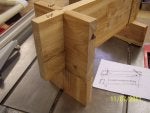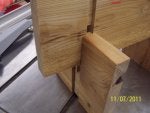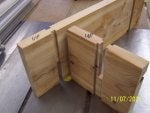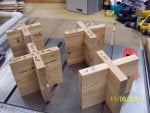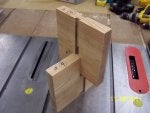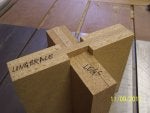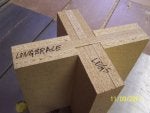I've been experimenting with this joint for a knock down table. No hardware allowed. My dado method was to use a narrow setup and flip the boards over to keep it centered....somehow that isn't working as accurately as I 'd like and I get confused whether I'm measuring the slot or the lapping piece. I don't expect an answer or solution, but I'm probably gonna go a 3/4" stack instead of the flip method. I realize I'm makin' it more complicated than just one dado up and one down and interlock the boards, but I see this a somewhat stronger and resistant to racking.
First attempt photos:
First attempt photos:



